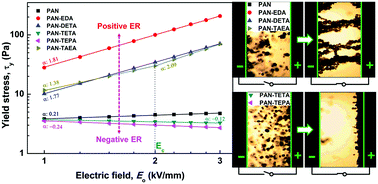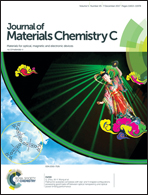Design of negative electrorheological materials inspired by electrophoretic separation of biomolecules
Abstract
Inspired by the electromigration phenomenon in biomolecules, we fabricated various oligoamine-modified polyacrylonitrile (PAN) particles to aim for a negative ER effect. A noteworthy result is that the modified PAN with a short oligoamine shows a positive ER effect owing to the improved dielectric property, while the modified PAN with a long oligoamine presents a negative ER effect due to the enhanced electrophoretic force. This is the first time that the negative ER effect is controllably obtained, differentiating our invention from previous trial-and-error based methods where the ER effects were coincidentally acquired by numerous experiments. Interestingly, the synthesized negative ER particles are migrated toward the anode at the DC electric fields, which is analogous with the electromigration phenomenon in biomolecules. In conclusion, the introduction of an oligoamine on the surface of the ER particles can improve both the positive and negative ER properties by controlling the length of oligoamines and manipulating the competitive effect between the dielectric property and the electrophoretic effect. We believe that our study can offer a new strategy for the development of both the positive ER and the negative ER materials. Moreover, we expect that our invention will facilitate the use of a negative ER suspension in various industries.



 Please wait while we load your content...
Please wait while we load your content...